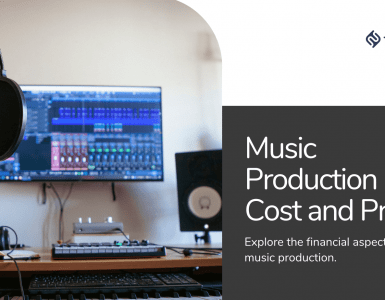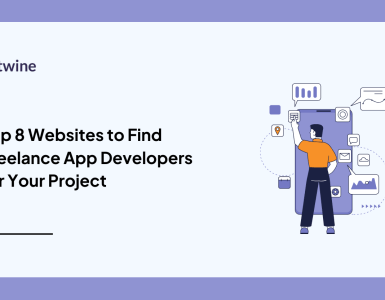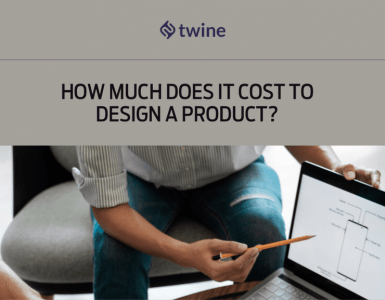Getting a positive ROI as a new business can be bloody hard. It’s like pushing a heavy boulder up a hill when someone’s timing you. Raising investment is incredibly time-consuming, and there’s the constant fear that you’ll run out of money and be forced to close up.
This puts owners in a difficult position, as every business needs to advertise to generate new business and revenue. However, business costs (wages, premises, etc) can be prohibitive, meaning these can end up taking precedence over marketing.
This puts owners in a difficult position – you know you need to advertise to generate new business and revenue, but running costs nearly always end up taking precedence. After all, you can hardly stop paying office rent or staff salaries.
This leaves much small business owners with the same difficult question: “How can small or new companies reduce company expenditure in the early stages, but remain competitive in their marketplace communications and deliver sales?”
In other words, how can you achieve a positive ROI on your marketing as a startup, without breaking the bank?
What are the costs of running a startup?
Even if you put no money into growth (not advisable), running a startup isn’t cheap. There are some costs that aren’t really negotiable and are therefore difficult to save money on.
For instance, if you want staff, you’ll have to pay them. And it’s probably a good idea to have an office…

We can break down the costs of running a startup into these rough percentages:
- Wages and set-up costs: 25%
- Infrastructure – premises, bills, internet etc: 45%
- Marketing and advertising: 10%
Both 1 and 2 are essential business costs that can’t be changed. They’re largely constant but can go up as a business gets bigger – for instance if your business expands to the point where you need to hire new staff or get bigger offices.
This means that business owners tend to try and save money on marketing and advertising, as it’s not a fixed cost. Plus, spend in this area can drop further if (and when) other business costs do increase.
This brings us to our next question…
How do startups advertise their business?
Certain startup costs aren’t negotiable, and this can have an impact on how much founders are willing to spend on marketing. Plus, although startup owners say increasing brand awareness is a major goal, research has shown that very few identify digital marketing as a top priority.
As well as this, many businesses seek outside help for marketing, mainly due to a lack of knowledge and a need for expert guidance on marketing communications.
Indeed, marketing a business is a well-trodden path, with two traditional options:
- Do It Yourself
- Hiring an agency
The choice here can have a massive impact on whether a business achieves a positive ROI early on.

Do it yourself
Many startups now have either automated growth software or an in-house marketing team, which are certainly a worthwhile investment. However, marketing work can become complex and require very specific skills, particularly when creating content like logos, branding, and explainer videos are needed. Often, the permanent increase in cost associated with hiring a full-time designer or animator doesn’t yield a positive ROI, so startups seek an external solution for the problem.
Hiring a digital marketing agency
A lack of knowledge pushes a large percentage of businesses to choose an agency. Nearly 15% of startups go down the agency route. However, this choice comes with its own set of problems:
- Agencies are expensive: Due to the number of staff involved, agencies charge a premium for their services. This cost is increased by agency pricing structures – for instance, iteration costs, retainer fees and licensing fees can all push a project over budget and destroy any chance of a positive ROI.
- Agencies don’t always deliver a high quality result: Expensive upfront costs, and limited creative control on your part can mean the end result simply isn’t worth the money invested for a startup.
- Agencies can take a long time to complete work: A lethal combo of bureaucracy, loads of different opinions and a lack of creative input on the client’s part can often mean agency projects drag on. In fact, 1 in 10 agency briefs take a staggering 50+ iterations to reach completion.
Calculating ROI for an agency
At this point, we need to calculate the actual return on investment when using an agency. To illustrate the figures, we’ll be breaking down the costs for a sample re-brand campaign.
A sportswear company wants to re-brand their website and marketing materials, including creating a new logo and brand video.
A large agency would charge between $40,000 to $60,000 for a basic brand refresh, which would take 3-4 months and include services like brand identity, stationery, copywriting, photography, and web design. This doesn’t quite meet our sportswear company’s needs – they’re looking for something more extensive, including a video.
For a more extensive brand overhaul, this cost creeps up to $120,000 – $250,000, with a timeline of 8-10 months. This would include thorough research and strategy, as well as the creation and implementation of all branding materials, including a video and full brand photography.
With the median startup seed round currently sitting at $625,000, an agency overhaul would seriously eat into this, leaving little left for other essential business costs. Assuming our hypothetical sportswear company raised this, a $120,000 brand overhaul represents 20% of the budget for the year.
This is clearly problematic, particularly when 10% is the normal amount spent on marketing. At such a high price, it’s near impossible for a startup to achieve a positive ROI:
ROI = ([Revenue - cost]/Cost) x 100
ROI = ([100,000 - 120,000]/120,000) x 100 = -£17 for every £1 spent
With other essential costs taken into account, this negative ROI could have serious negative ramifications for the business’s long term finances, particularly when they’re so reliant on successfully raising investment.
Is it even possible to achieve a positive ROI?
Now that it’s all looking a bit doom and gloom, it seems like the right time to mention some good news. It is possible to achieve a positive ROI on marketing and branding. You’ve just got to think outside of the box a little. We’re going to help you find the silver bullet for your marketing woes.
With agencies, you’re paying for the time of lots of people. While there are certainly benefits to this, it’s often unaffordable for a startup, as various fees quickly drive up the cost.
On the other hand, if you hire a freelancer, you’re paying for the time of one person. Although this might mean hiring a few specialists for a large-scale branding project, you’re still going to be paying fewer peoples’ salaries. This means the potential ROI is much higher.
Equally though, we know it can be hard to trust a total stranger with the future of your business.
And that’s where Twine comes in.
Our creative freelancers can help you with any project, from logos to explainer videos to pitch decks. Plus, we vet all pitches, meaning you know you’re going to get a high-quality result. On top of that, you’ll be able to get a positive return too. Let’s take a look at the figures for the sportswear company’s re-brand:
Copywriter - $1000 Web designer - $5000 Logo designer - $2000 Brand video - $3000
This brings us to a grand total of $11,000, a tenth of the cost of hiring an agency. Assuming similar revenue figures, this means hiring freelancers gives us a much better ROI for small businesses:
ROI = ([100,000 - 11,000]/11,000) x 100 = $89 for every $1 spent
Even if revenue isn’t this high, it takes a lot less to justify hiring a freelancer vs hiring an agency. On Twine, you can choose the skill level of the freelancers you hire, meaning that it’s possible to be more flexible with your budget.
Ultimately, this means achieving a positive ROI becomes much more straightforward. You won’t be trapped by prohibitively high prices, meaning you can really focus on the important stuff – making your business the best it can be (with a positive bank balance to boot!) Plus, you’ll be impressing important investors with some lovely positive metrics.
So what are you waiting for? Get started today on Twine and take yourself one step closer to a killer business.
Want to get your own branding designed? Choose from our top freelancers and get your business off the ground running.
Ready to hire? Our marketplace of over 410,000 freelancers has the skills and expertise needed to skyrocket your business to the next level. From marketers to designers, copywriters to SEO experts – browse the talented bunch here!



